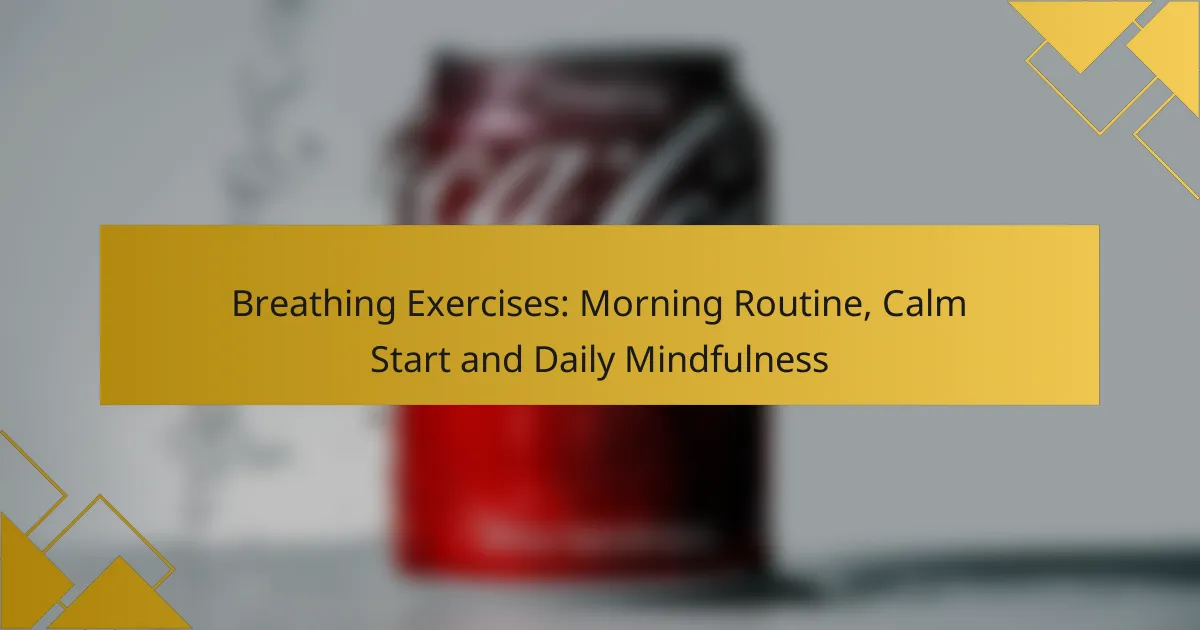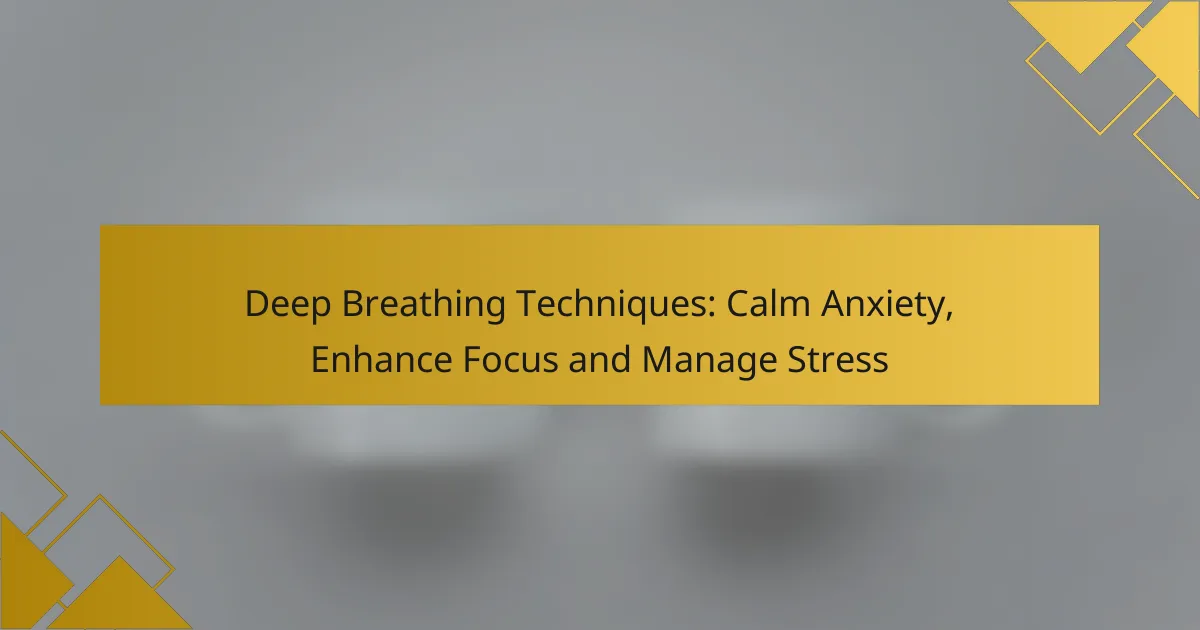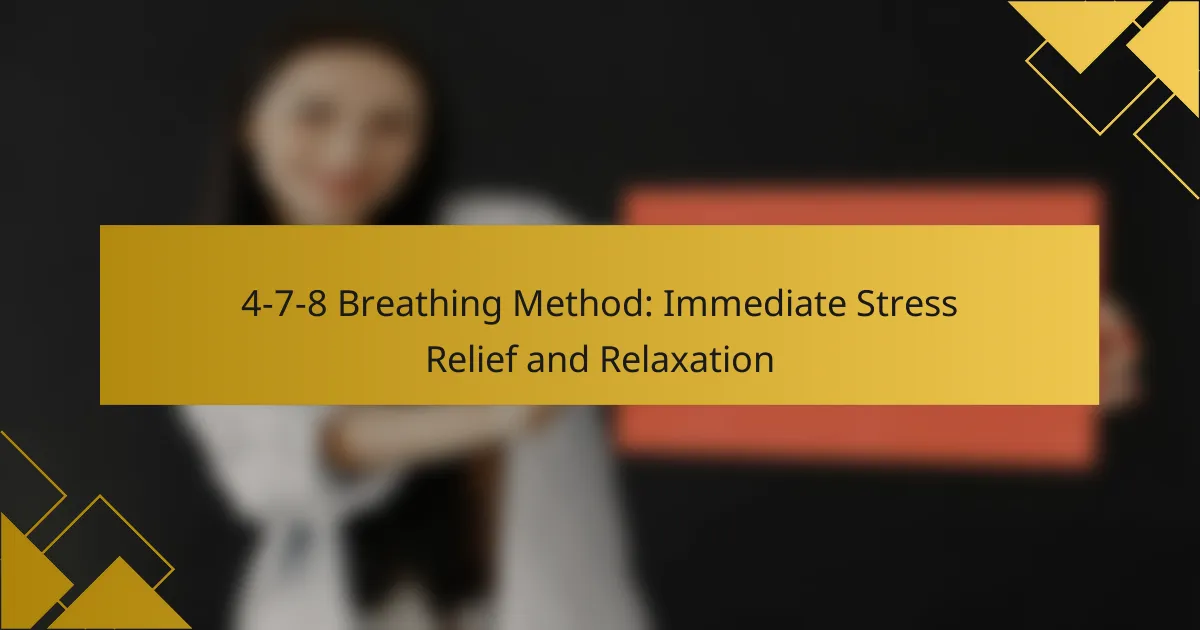Breathwork is a powerful practice that offers numerous benefits, including stress relief, enhanced athletic performance, and improved mental clarity. By focusing on breath patterns, individuals can effectively reduce anxiety and promote relaxation, while athletes can optimize their physical capabilities and recovery. Additionally, breathwork increases oxygen flow to the brain, sharpening focus and cognitive abilities for better overall mental well-being.

How does breathwork relieve stress?
Breathwork effectively relieves stress by promoting relaxation and reducing physiological responses associated with anxiety. By focusing on breath patterns, individuals can lower their stress levels and improve their overall sense of well-being.
Reduces cortisol levels
Breathwork can lead to a decrease in cortisol, the hormone primarily responsible for stress. Techniques such as deep, slow breathing have been shown to lower cortisol levels significantly, which can help alleviate feelings of stress and anxiety. Regular practice may contribute to long-term reductions in stress-related health issues.
Enhances relaxation response
Engaging in breathwork activates the body’s relaxation response, counteracting the stress-induced fight-or-flight reaction. This response is characterized by a decrease in heart rate and blood pressure, promoting a state of calm. Techniques like diaphragmatic breathing can be particularly effective in fostering this relaxation.
Improves emotional regulation
Breathwork aids in emotional regulation by helping individuals become more aware of their emotional states. By practicing controlled breathing, one can create a buffer against overwhelming emotions, allowing for better responses to stressors. This can lead to improved resilience and emotional stability over time.
Promotes mindfulness
Breathwork encourages mindfulness by directing attention to the present moment and the act of breathing. This practice can help individuals detach from negative thoughts and stressors, fostering a greater sense of peace. Incorporating breath awareness into daily routines can enhance overall mental clarity and focus.

What are the benefits of breathwork for athletic performance?
Breathwork offers several advantages for athletic performance, including improved oxygen utilization, enhanced endurance, and faster recovery times. By focusing on breathing techniques, athletes can optimize their physical capabilities and mental clarity during training and competition.
Increases oxygen efficiency
Breathwork helps athletes maximize oxygen intake and delivery to muscles, which is crucial for performance. Techniques such as diaphragmatic breathing can increase lung capacity and improve the efficiency of oxygen exchange. This means that athletes can perform at higher intensities with less effort, making their workouts more effective.
To practice, focus on deep, rhythmic breaths, aiming for a 4-4-8 pattern (inhale for 4 seconds, hold for 4, exhale for 8). Regular practice can lead to noticeable improvements in stamina and overall performance.
Enhances endurance
Breathwork can significantly enhance endurance by improving cardiovascular efficiency. When athletes engage in controlled breathing, they can maintain a steady heart rate and reduce fatigue during prolonged activities. This is particularly beneficial in endurance sports like running, cycling, and swimming.
Incorporating breathwork into training routines can help athletes push their limits. For instance, practicing breath control during long runs can help maintain energy levels and delay the onset of exhaustion.
Improves recovery time
Effective breathwork techniques can accelerate recovery by promoting relaxation and reducing stress levels. Controlled breathing activates the parasympathetic nervous system, which helps lower heart rate and blood pressure, facilitating quicker recovery after intense workouts.
Post-exercise, athletes can benefit from a few minutes of focused breathing, such as box breathing (4 seconds inhaling, 4 seconds holding, 4 seconds exhaling, 4 seconds holding). This practice can help clear lactic acid from muscles and reduce soreness.
Boosts mental focus
Breathwork not only enhances physical performance but also sharpens mental clarity and focus. By practicing mindfulness through breathing, athletes can improve their concentration and reduce anxiety, which is essential during competitions.
To boost mental focus, athletes can use techniques such as 4-7-8 breathing, which involves inhaling for 4 seconds, holding for 7, and exhaling for 8. This method can help clear the mind and prepare for peak performance.

How does breathwork improve mental clarity?
Breathwork enhances mental clarity by promoting oxygen flow to the brain, which can sharpen focus and cognitive abilities. This practice encourages mindfulness, helping individuals clear mental fog and improve their overall mental state.
Enhances cognitive function
Breathwork techniques, such as deep diaphragmatic breathing, can significantly enhance cognitive function. By increasing oxygen levels in the blood, these practices support brain health and improve concentration. Regular breathwork sessions can lead to better memory retention and quicker information processing.
Reduces anxiety
Engaging in breathwork can effectively reduce anxiety levels by activating the body’s relaxation response. Techniques like box breathing or 4-7-8 breathing help calm the nervous system, lowering cortisol levels and promoting a sense of peace. This reduction in anxiety can lead to clearer thinking and a more focused mindset.
Promotes better decision-making
Breathwork fosters better decision-making by enhancing emotional regulation and reducing stress. When individuals practice controlled breathing, they can approach decisions with a calmer, more rational mindset. This clarity allows for more thoughtful choices rather than impulsive reactions driven by stress or anxiety.

What types of breathwork techniques are effective?
Several breathwork techniques can effectively enhance stress relief, athletic performance, and mental clarity. Techniques such as box breathing, diaphragmatic breathing, and the Wim Hof method each offer unique benefits and approaches to managing breath and energy.
Box breathing
Box breathing, also known as square breathing, involves inhaling, holding, exhaling, and holding again for equal counts, typically four seconds each. This technique helps calm the nervous system, making it particularly effective for stress relief and anxiety management.
To practice box breathing, find a comfortable position and follow these steps: inhale through your nose for four seconds, hold your breath for four seconds, exhale through your mouth for four seconds, and hold again for four seconds. Repeat this cycle for several minutes, gradually increasing the duration as you become more comfortable.
Diaphragmatic breathing
Diaphragmatic breathing, or abdominal breathing, focuses on engaging the diaphragm fully, allowing for deeper breaths. This technique promotes relaxation and can improve oxygen flow, which is beneficial for both mental clarity and athletic performance.
To practice diaphragmatic breathing, lie down or sit comfortably. Place one hand on your chest and the other on your abdomen. Inhale deeply through your nose, ensuring your abdomen rises while your chest remains still. Exhale slowly through your mouth. Aim for a breathing rate of about six to ten breaths per minute to maximize relaxation.
Wim Hof method
The Wim Hof method combines specific breathing techniques, cold exposure, and meditation to enhance physical and mental performance. This method is known for its potential to increase energy levels and improve focus while reducing stress.
To practice the Wim Hof method, start with 30 deep breaths, inhaling through the nose and exhaling through the mouth. After the last exhale, hold your breath for as long as comfortable, then inhale deeply and hold for about 15 seconds. Incorporate cold showers or ice baths to further enhance the benefits. Always listen to your body and consult a healthcare professional if you have any concerns.

What are the prerequisites for practicing breathwork?
Practicing breathwork requires no special equipment or extensive training, but a few key prerequisites can enhance the experience. A willingness to explore your breath and a comfortable space are essential for effective practice.
Understanding basic techniques
Familiarizing yourself with basic breathwork techniques is crucial. Techniques such as diaphragmatic breathing, box breathing, and alternate nostril breathing can help you manage stress and improve focus. Start with simple patterns, like inhaling for four counts, holding for four, exhaling for four, and pausing for four.
As you gain confidence, you can explore more advanced methods like holotropic breathwork or transformational breath. Each technique has unique benefits, so consider your goals and choose accordingly.
Creating a conducive environment
Establishing a conducive environment is vital for effective breathwork. Find a quiet, comfortable space where you won’t be disturbed. Consider dim lighting or natural light to create a calming atmosphere.
Additionally, you may want to incorporate elements like cushions or mats for comfort, and perhaps soft music or nature sounds to enhance relaxation. Ensure the temperature is comfortable, as a too-hot or too-cold environment can distract from your practice.

How can breathwork be integrated into daily routines?
Breathwork can be seamlessly incorporated into daily routines by setting aside dedicated time for specific practices. Integrating short sessions throughout the day can enhance overall well-being and performance.
Morning energizing sessions
Morning breathwork sessions can kickstart your day by increasing oxygen flow and boosting energy levels. Simple techniques like diaphragmatic breathing or the 4-7-8 method can be effective, taking just a few minutes to perform.
Consider setting aside 5-10 minutes each morning to practice these techniques. This can help clear mental fog and prepare you for the day ahead. Aim for a quiet space where you can focus and breathe deeply without distractions.
Pre-workout warm-ups
Incorporating breathwork into your pre-workout routine can enhance athletic performance by improving oxygen delivery to muscles. Techniques such as box breathing or rhythmic inhalation and exhalation can help you achieve a focused and energized state.
Spend 3-5 minutes before your workout practicing these breathing techniques. This not only prepares your body physically but also mentally primes you for the exercise ahead. Avoid rushing through the process; take your time to find a comfortable rhythm.










